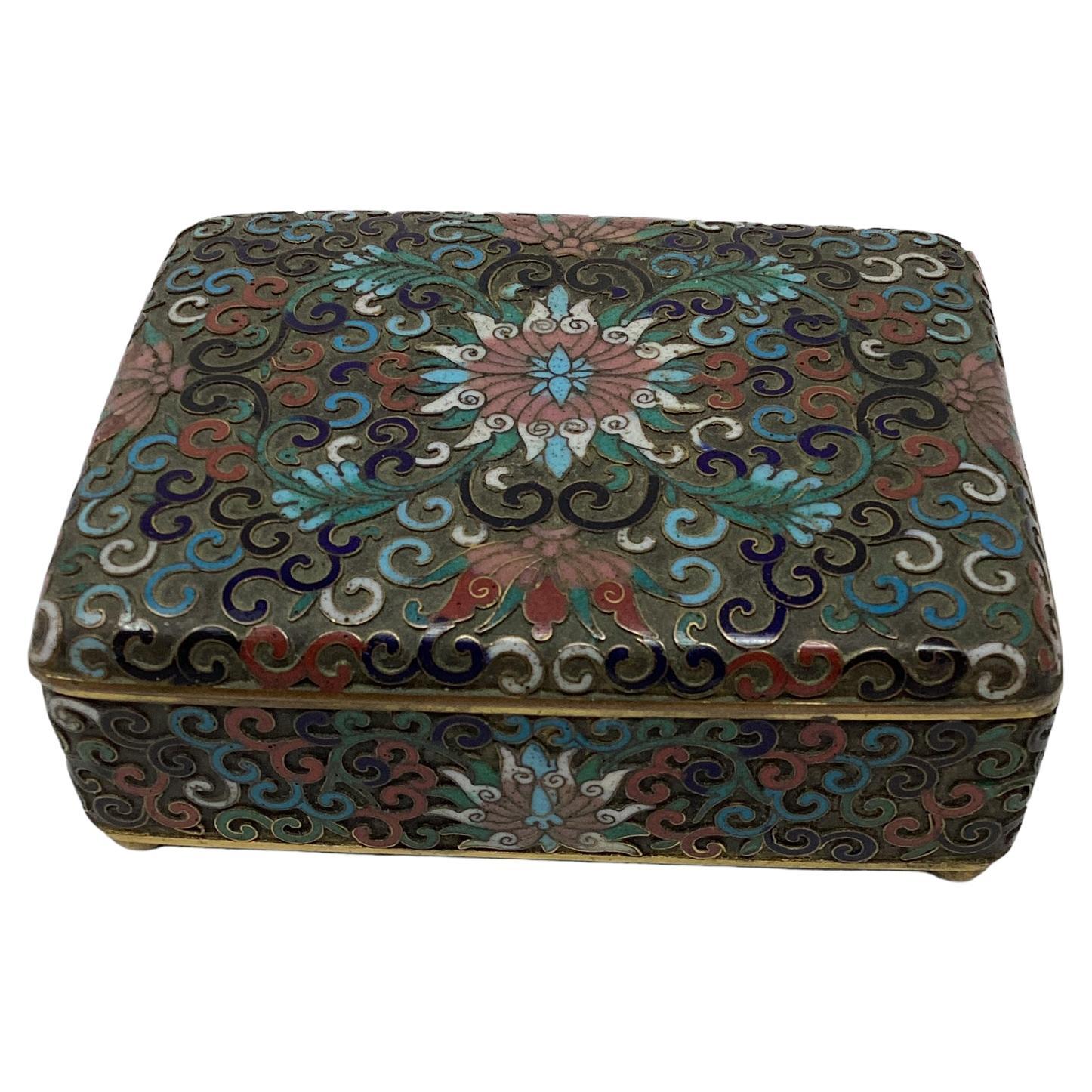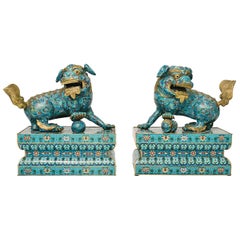Questions & Answers
Our trusted network of 1stDibs sellers answer common questions
What is cloisonné worth?
1 Answer

What a cloisonné piece is worth will depend on what type of piece it is, its condition, rarity and more.
Cloisonné (“cell” in French) is a technique in which thin wires of fine silver or gold are used to outline a design, which is then filled with enamel. The piece is subsequently placed in a kiln where the enamel is melted. Cloisonné is distinct because the individual wires remain visible, forming an outline of the motif. When it comes to jewelry design and other disciplines, cloisonné enamel was popular during the Byzantine Empire.
Collectors of authentic antique Chinese furniture and decorative objects know that Ming dynasty-era cloisonné objects are particularly coveted. Although ornamentation was minimal at the time, Ming dynasty furniture often featured carved or painted details of flowers, insects, dragons, fruits and other motifs.
As overseas trade expanded, techniques from the West, like cloisonné enamel painting, adorned table screens and other pieces. With respect to Ming-era cloisonné objects and furnishings, an elaborately decorated item featuring lots of vibrant colors and details is likely to be more valuable at auction than its minimally adorned counterpart (the same goes for Victorian cloisonné objects). Chinese cloisonné vases created during the Ming and Qing eras represent a golden age of Chinese furniture design.
Chinese cloisonné objects were frequently imported to Japan, where the technique wasn’t adopted until the 1800s. Although it was a time of societal and cultural shifts, a bolstered interest in art and design elevated Japanese craft traditions during the Meiji era, and today, Meiji-era cloisonné vases or incense burners in good condition are of great interest to collectors.
Find antique and vintage cloisonné objects on 1stDibs.
Cloisonné (“cell” in French) is a technique in which thin wires of fine silver or gold are used to outline a design, which is then filled with enamel. The piece is subsequently placed in a kiln where the enamel is melted. Cloisonné is distinct because the individual wires remain visible, forming an outline of the motif. When it comes to jewelry design and other disciplines, cloisonné enamel was popular during the Byzantine Empire.
Collectors of authentic antique Chinese furniture and decorative objects know that Ming dynasty-era cloisonné objects are particularly coveted. Although ornamentation was minimal at the time, Ming dynasty furniture often featured carved or painted details of flowers, insects, dragons, fruits and other motifs.
As overseas trade expanded, techniques from the West, like cloisonné enamel painting, adorned table screens and other pieces. With respect to Ming-era cloisonné objects and furnishings, an elaborately decorated item featuring lots of vibrant colors and details is likely to be more valuable at auction than its minimally adorned counterpart (the same goes for Victorian cloisonné objects). Chinese cloisonné vases created during the Ming and Qing eras represent a golden age of Chinese furniture design.
Chinese cloisonné objects were frequently imported to Japan, where the technique wasn’t adopted until the 1800s. Although it was a time of societal and cultural shifts, a bolstered interest in art and design elevated Japanese craft traditions during the Meiji era, and today, Meiji-era cloisonné vases or incense burners in good condition are of great interest to collectors.
Find antique and vintage cloisonné objects on 1stDibs.
1stDibs ExpertApril 8, 2024
Shop for Cloisonne Objects on 1stDibs
Antique Cloisonne Inkwell
By Inaba Cloisonne Co.
Located in Vienna, AT
good with only minor losses to the cloisonne.
Category
Early 20th Century French Art Deco Inkwells
Materials
Brass
Rare Important Estate Bronze Handpainted Cloisonne Urn with Handles
By Inaba Cloisonne Co.
Located in New York, NY
and Colored Cloisonne Vase with Handels. Vase is Magnificently Adorned with Cloisonne Detail. Taken
Category
20th Century Japanese Vases
Materials
Porcelain
$1,800 Sale Price
60% Off
Free Shipping
19th Century Chinese Cloisonné Fu Dogs
Located in Houston, TX
gilding over copper.
Chinese cloisonné objects were intended primarily for the furnishing of temples and
Category
Antique 1890s Chinese Chinese Export Metalwork
Materials
Copper, Enamel
$85,000 / set
Jewelry Ring Trinket Boxes Pair Cloisonné Swan Japanese Gift Love Valentine
Located in BUNGAY, SUFFOLK
export.
Cloisonné is a way of enameling an object, (typically made of copper) whereby fine wires are
Category
Antique 1890s Japanese Meiji Jewelry Boxes
Materials
Enamel
19th C. Japanisme French Porcelain Jardinière w/ Gilt and Silvered-Bronze Stand
By Edouard Lievre
Located in New York, NY
technique to accomplish on porcelain. This technique is used to mimic Japanese cloisonné objects. The
Category
Antique 1880s French Japonisme Planters, Cachepots and Jardinières
Materials
Bronze
Antique Chinese Cloisonné Box
Located in Chapel Hill, NC
Antique Chinese Cloisonné Box with wood lined interior. The box rests on round brass ball feet. The
Category
Vintage 1920s Chinese Export Decorative Boxes
Materials
Metal


